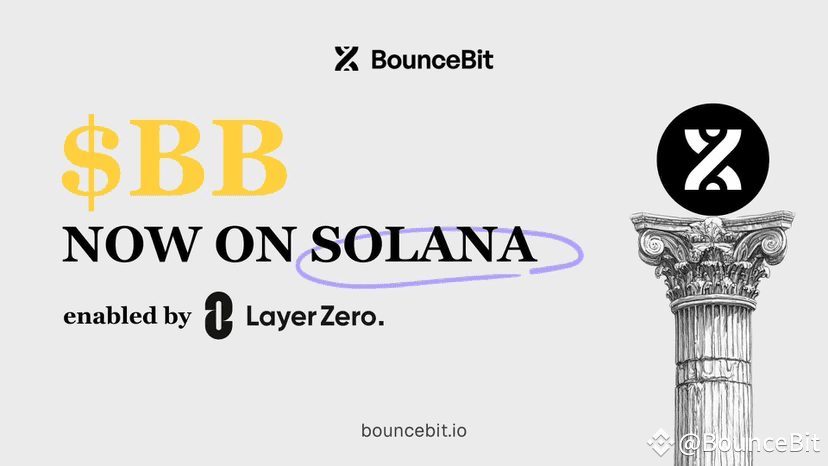 As the largest cryptocurrency by market capitalization, Bitcoin has long been viewed as 'digital gold', but its financial utility is mainly limited to value storage rather than income-generating assets. BounceBit is changing this situation through innovative Bitcoin Restaking architecture, allowing BTC holders to obtain stable and considerable returns without sacrificing security.
As the largest cryptocurrency by market capitalization, Bitcoin has long been viewed as 'digital gold', but its financial utility is mainly limited to value storage rather than income-generating assets. BounceBit is changing this situation through innovative Bitcoin Restaking architecture, allowing BTC holders to obtain stable and considerable returns without sacrificing security.
1. Bitcoin Restaking: From 'Sleeping Assets' to 'Yield Engine'
1. Limitations of Traditional BTC Staking
Before BounceBit, Bitcoin's staking yields mainly relied on two methods:
- Centralized Custody (CeFi): Such as BTC collateralized wealth management offered by exchanges, with annual yields usually below 5% and custodial risks.
- Wrapped BTC (WBTC, tBTC): Requires cross-chain to Ethereum and other ecosystems, relying on the security of smart contracts, with yields limited by DeFi market volatility.
Both methods have failed to fully unleash Bitcoin's financial potential, and they carry centralization or cross-chain risks.
2. BounceBit's Solution: Native BTC Restaking
BounceBit's core innovation lies in building a Bitcoin native Restaking protocol, achieving a balance of high yield and high security through the following mechanisms:
- 1:1 pegged bBTC: Users receive bBTC (a liquid staking derivative from BounceBit) after staking BTC, which can be freely used in DeFi while maintaining a 1:1 exchange with BTC.
- Multi-strategy Yield Aggregation: The protocol automatically allocates staking funds to optimal yield channels, including lending, LP market making, cross-chain arbitrage, etc., with a current total annual yield of 12.8% (far higher than CeFi's 3-5%).
- Bitcoin Mainnet Settlement Layer: All staking operations are ultimately verified by Bitcoin scripts to ensure asset security.
Compared to traditional solutions, BounceBit's advantages:
Indicator BounceBit CeFi Staking WBTC Cross-chain Staking
Annual Yield 12.8% 3-5% 6-9%
Security Bitcoin Mainnet Settlement Relies on Exchanges Relies on Ethereum Contracts
Liquidity Redeemable at Any Time Lock-up Period Restrictions Need Cross-chain Unlocking
2. BounceBit's Restaking Architecture: How to Achieve High Yields?
1. Sources of Yield: Three-track Strategy Optimization
BounceBit's yields are not solely reliant on the lending market but maximize returns through dynamic strategy adjustments:
- Lending Market (40% Yield): Lending BTC to institutions or DeFi protocols for stable interest.
- LP Market Making (35% Yield): Providing liquidity on DEX (such as Uniswap, PancakeSwap) to earn trading fees.
- Cross-chain Arbitrage (25% Yield): Arbitraging price differences of BTC across different chains.
The smart yield distribution algorithm automatically adjusts strategy weights based on market conditions to ensure yield maximization.
2. Security: Bitcoin Mainnet + MPC Multi-signature
- Bitcoin Mainnet Settlement: All staking operations are ultimately verified by Bitcoin scripts, avoiding smart contract vulnerability risks.
- MPC (Multi-Party Computation) Custody: Adopts institutional-grade custody solutions (such as Fireblocks) to prevent single points of failure.
- $50 million insurance fund: Covers potential hacker attacks or extreme market fluctuations.
This enables BounceBit to achieve the best balance between yield and security.
3. Market Impact: The Financialization Revolution of the Bitcoin Ecosystem
1. Attracting Institutional Funds
Traditional financial institutions (such as hedge funds, family offices) are usually reluctant to deposit BTC into DeFi protocols due to concerns about smart contract risks. BounceBit's institutional-grade custody + Bitcoin mainnet settlement model makes it a preferred entry point for compliant funds.
- Case: A European asset management company staked 200 million BTC through BounceBit, with an annual yield exceeding 24 million.
2. Promote the Growth of the Bitcoin DeFi Ecosystem
BounceBit's bBTC has become the underlying asset for multiple DeFi protocols:
- Lending Market: Aave, Compound plan to support bBTC as collateral.
- Derivatives Trading: dYdX and GMX launch bBTC perpetual contracts.
- RWA (Real World Assets): bBTC can be staked to generate stablecoins for on-chain US debt investment.
3. Advantages Over Competitors
Project Yield Sources Security Liquidity Institutional Compatibility
BounceBit Multi-strategy Optimization Bitcoin Mainnet + MPC High (1:1 Redemption) High (Compliant Custody)
Stacks PoX Mining relies on Stacks chain General (requires cross-chain) Low (non-custodial)
Babylon Bitcoin Staking Bitcoin Mainnet Low (Lock-up Period) Medium (Partial Compliance)
4. Future Outlook: Key Infrastructure for Bitcoin Financialization
BounceBit's Restaking model is driving Bitcoin's transformation from 'digital gold' to 'income-generating assets'. Future possible developments include:
1. Institutional-grade BTC Wealth Management Market: Banks and asset management companies or launching BTC yield products based on BounceBit.
2. Bitcoin DeFi Explosion: More protocols supporting bBTC, forming a native financial ecosystem for BTC.
3. RWA (On-chain US Debt, Credit) Integration: bBTC may become a bridge for Bitcoin to enter traditional finance.
Conclusion: BounceBit's Bitcoin Restaking architecture not only enhances BTC's capital efficiency but may also become a key infrastructure for the financialization of Bitcoin. For long-term holders, it provides robust passive income; for the DeFi ecosystem, it brings a new source of liquidity. This innovation may redefine Bitcoin's role in the crypto economy.
